The Department of Chemistry is excited to welcome Professor Barbara Sherwood Lollar who has been cross-appointed from the Department of Earth Sciences. Sherwood Lollar has spent the last two decades expanding our understanding of the groundwater that sits deep below the Earth’s crust. Her work has asked us to rethink what we know not only about our own planet but about other planets as well.
Sherwood Lollar began her studies in chemistry at Harvard University. It was there that she discovered her curiosity about the earth sciences. After Harvard, she would go on to complete her PhD in Earth Sciences at the University of Waterloo before carrying out her postdoctoral research at the University of Cambridge.
And what brought the stable isotope chemist back to Canada?
“A mass spectrometer,” Sherwood Lollar says with a laugh. “The Department of Earth Sciences was offering a position that came with full funding to wet up a new lab and that was extremely rare. But of course I’m really happy to be back in Canada.”
As a Companion of the Order of Canada as well as Canada’s Research Chair for Isotopes of the Earth and Environment, the Kingston, Ontario native has certainly made her mark.
In addition to her work on removing pollutants from our rural and urban groundwater, Sherwood Lollar and her research team have travelled around the world investigating microbial life in the water found in mines.
In 2007, more than two kilometres below the Earth’s crust in Timmins, Ontario, Sherwood Lollar and her team discovered groundwater that they suspected would be tens of millions, or maybe even hundreds of millions of years old. In 2013, they revealed in Nature that in fact this water was more than a billion years old, the oldest water ever discovered.
“This discovery has a whole series of implications that we’re still only beginning to fully understand,” say Sherwood Lollar. “In addition to water, these fluids contain noble gas components that are giving us a better idea of what the atmosphere looked like at that time.”
“And the other chemistry going on down there is the production of hydrogen, methane and sulphate. These are all the foodstuffs for microbial life. If there’s a possibility that energy-rich fluids can exist deep inside a planet and sustain life, then that has obvious implications on how we go about searching for life on other planets.”
The response from the scientific community has led to new collaborations for Sherwood Lollar. She’s had chemists, physicists, engineers and planetary scientists from all over the world interested in learning more about her discovery and its impact on this planet and others.
“I think one of the most rewarding things has been how it’s caught the public’s imagination,” she says. “Particularly in a time where in some countries there seems to have been a growing mistrust of science, anything we as scientists can do to reignite that excitement and communication is really important.”
“And from a personal perspective, I continue to be surprised by our planet. Time after time, just when we think we have something figured out, we make a discovery like this that forces us to question what we know.”


